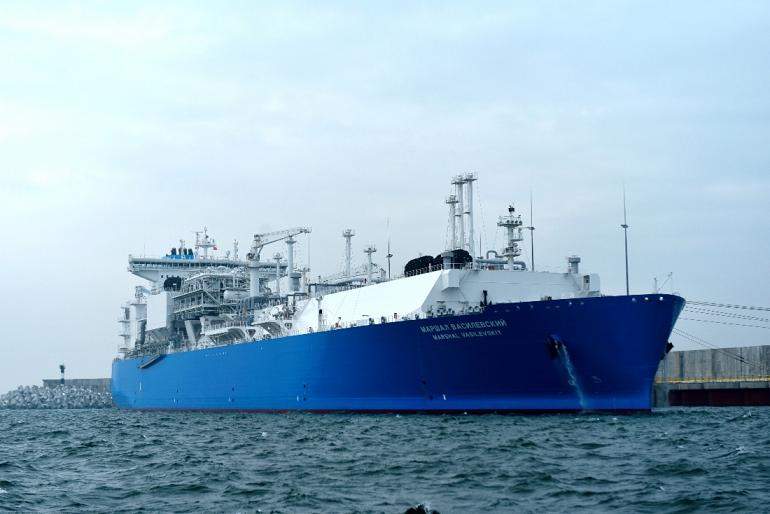Gazprom has officially inaugurated an offshore gas receiving terminal and the Marshal Vasilevskiy floating storage and regasification unit (FSRU) in Russia’s Kaliningrad Region.

Image: Gazprom commissioned the Marshal FSRU. Photo: courtesy of Gazprom.
For further enhanced energy security in the Kaliningrad, Gazprom said that it executed an alternative gas supply project focused on LNG deliveries by sea. In this connection, the company built a gas receiving terminal based in the Baltic Sea and onshore was built in the Kaliningrad Region.
Gazprom management committee chairman Alexey Miller said: “A unique project that has no equivalent in Russia, a sophisticated project of national importance is now completed. The Kaliningrad Region has been provided with a totally independent gas supply route.
“Gazprom has brought the region’s energy security to a fundamentally new level. The Company will continue to work towards improving the reliability of gas supplies to the Kaliningrad Region.”
According to the Russian gas producer, a fixed marine berth with a breakwater is a key component of the gas receiving terminal. Located 5km from the shore, the component allows the floating regasification unit to be moored where the sea is around 19m deep.
The marine berth is made up of a 125.5m monolithic slab of high-strength concrete resting on 177 piles. Gazprom said that special equipment for receiving gas was installed on top of the slab in addition to mooring devices.
From the seaward, the marine berth is shielded with a 728m C-shaped breakwater whose structure helps in the safe operation of the vessel and giving it the ability to withstand strong Baltic storms.
The Marshal Vasilevskiy vessel, which transports LNG, also carries out regasification operations by converting LNG to gaseous form. The FSRU has three regasification lines, with one of them being a backup line.
The regasification process begins at the FSRU as and when the vessel is moored at the berth. After this, the liquefied gas is converted to gaseous form and supplied into the existing gas transmission system through a newly-laid 13km connecting gas pipeline.
The gas is then supplied to consumers or sent into the Kaliningradskoye underground gas storage (UGS) facility.
